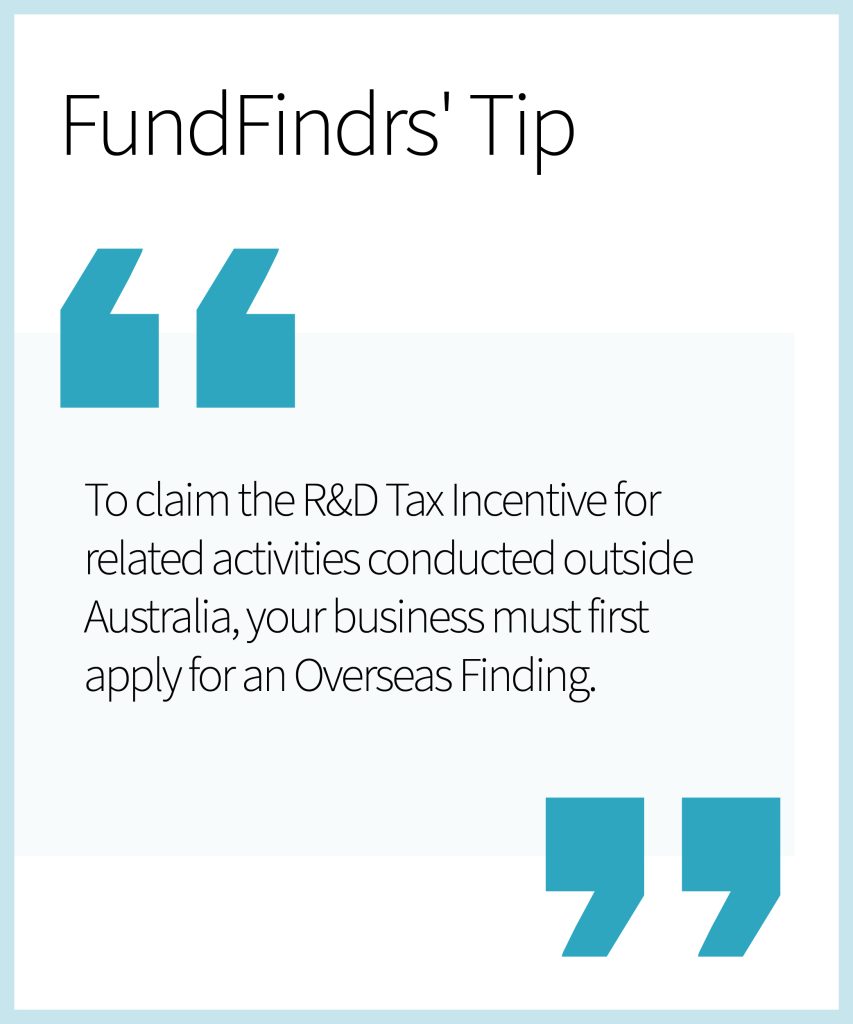The Research & Development Tax Incentive (R&DTI) is an invaluable funding opportunity, supporting business innovation and growth. However, claiming the R&D Tax Incentive in Australia can often be misunderstood, leading to missed opportunities or incorrect applications.
In our previous article “Mastering the R&D Tax Incentive: top mistakes to avoid with your application” our R&DTI expert, Bruce Murray, talked to us about common application mistakes.
With Bruce’s many years of experience assessing R&D Tax Incentive applications with AusIndustry, coupled with his knowledge of audit and risk make his insights especially useful.
For this article, we asked him to share frequent misconceptions around the R&D Tax Incentive and clarify them for us.
- What does the term ‘core R&D activities’ mean?
- Do some business owners believe the R&DTI is only for large businesses?
- How detailed do R&D records need to be?
- What do businesses often get wrong about how much time they have to submit their claims?
- Is the application process the same for R&D activities conducted outside of Australia?
1. The term “core R&D activities” can be misinterpreted when it comes to R&D activities. What does it mean according to the R&DTI program?
To meet the definition of an R&D activity, there are several legislative requirements that need to be demonstrated for the R&D Tax Incentive program to respond.
Prior to commencement, the outcome of the R&D activity must not have been known or determined in advance by a competent professional in the field, based on current knowledge, information, and experience. This needs to be a true innovation or, in simple words, no one else knows this; no one else is doing it.
The unknown outcome must be determined by applying a systematic progression of work following a scientific process i.e. hypothesis, experimentation, observations, and conclusions. There needs to be a methodical process supported by clear and documented evidence.
Additionally, The R&D activity must be conducted for the purpose of generating new knowledge – where previously there was a knowledge gap, and the R&D project activities were required to address it.

2. Do some business owners believe the R&DTI is only for large business or specific industries?
Definitely, the R&DTI program is not only for large companies. To be honest, the size of the company itself is not that important. Similarly, the sector, or industry type is not an influence on the R&DTI claim outcome.
In October 2024, the ATO released their “R&D tax incentive transparency report 2021–22” in which they noted a significant number of SMEs and smaller companies across all types and sectors of industry.
This means it does not matter what the industry is, nor how large (or small) the company is. So long as anticipated eligible R&D expenditure exceeds the threshold of $20k, an R&DTI application can be considered.
3. How detailed do R&D records need to be to apply successfully for the R&D Tax Incentive?
The records of a company’s R&D activities need to be as detailed and comprehensive as possible and reflect how those activities fit within the overall project.
R&DTI applications are subject to what we call “desktop understanding”. An assessment on merit, on the evidence presented at the time, without needing further explanation from an external source. This allows for objective assessment.
Maintaining organised documentation is crucial for supporting applications and providing evidence if needed. I recommend clients prepare comprehensive documentation in advance to ensure easy retrieval during a possible inspection.
FundFindrs helps you stay audit-ready. We support you in building clear, compliant documentation that strengthens your R&DTI claim.
4. What do businesses often get wrong about how much time they have to submit their claims?
Businesses have up to 10 months after the End of Financial Year (EOFY) to submit their application. However, submitting an R&DTI application shortly after the financial year-end offers several advantages.
Firstly, it provides ample time for thorough due diligence, enabling a more comprehensive investigation and discussion of activities potentially eligible for the R&DTI. Secondly, early submission helps avoid the application backlog AusIndustry typically experiences as the April 30th deadline approaches, thereby increasing the likelihood of a faster processing time.
Finally, submitting the R&DTI Schedule, an ATO document, concurrently with the Company Tax Return (CTR) simplifies the process, facilitates a more streamlined submission, and ultimately enables a quicker rebate, which can significantly improve a company’s cash flow.
5. What about R&DTI applications for businesses conducting R&D activities outside of Australia? Is the application process the same?
To claim the R&DTI for related activities conducted outside Australia, your business must first apply for an Overseas Finding.
To be eligible, your overseas R&D activities must meet all four of the following criteria:
- The activity must qualify as an eligible R&D activity.
- It must have a scientific link to a core R&D activity carried out in Australia.
- It must be conducted outside Australia and its external Territories.
- You must show that the overseas activity cannot be conducted in Australia due to specific reasons such as the lack of necessary facilities, expertise, or environment
- The total cost of overseas activities must be less than the cost of the directly related R&D work undertaken in Australia.
You can find more information from the government’s website for the Australian business community here.

Knowing what activities qualify for the R&D Tax Incentive (and also which do not) can be tricky. Fortunately, FundFindrs’ team of experts is here to help guide your business through its R&DTI application. Book a FREE consultation with one of our specialists now.




